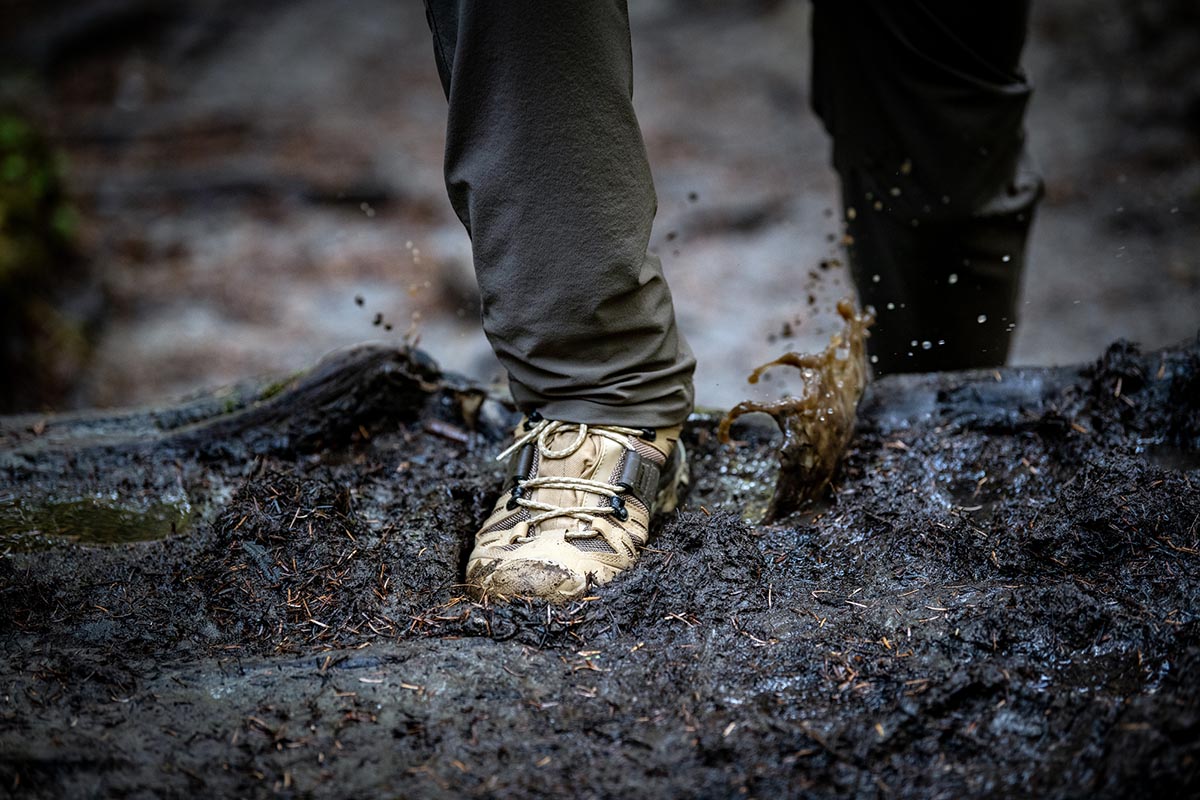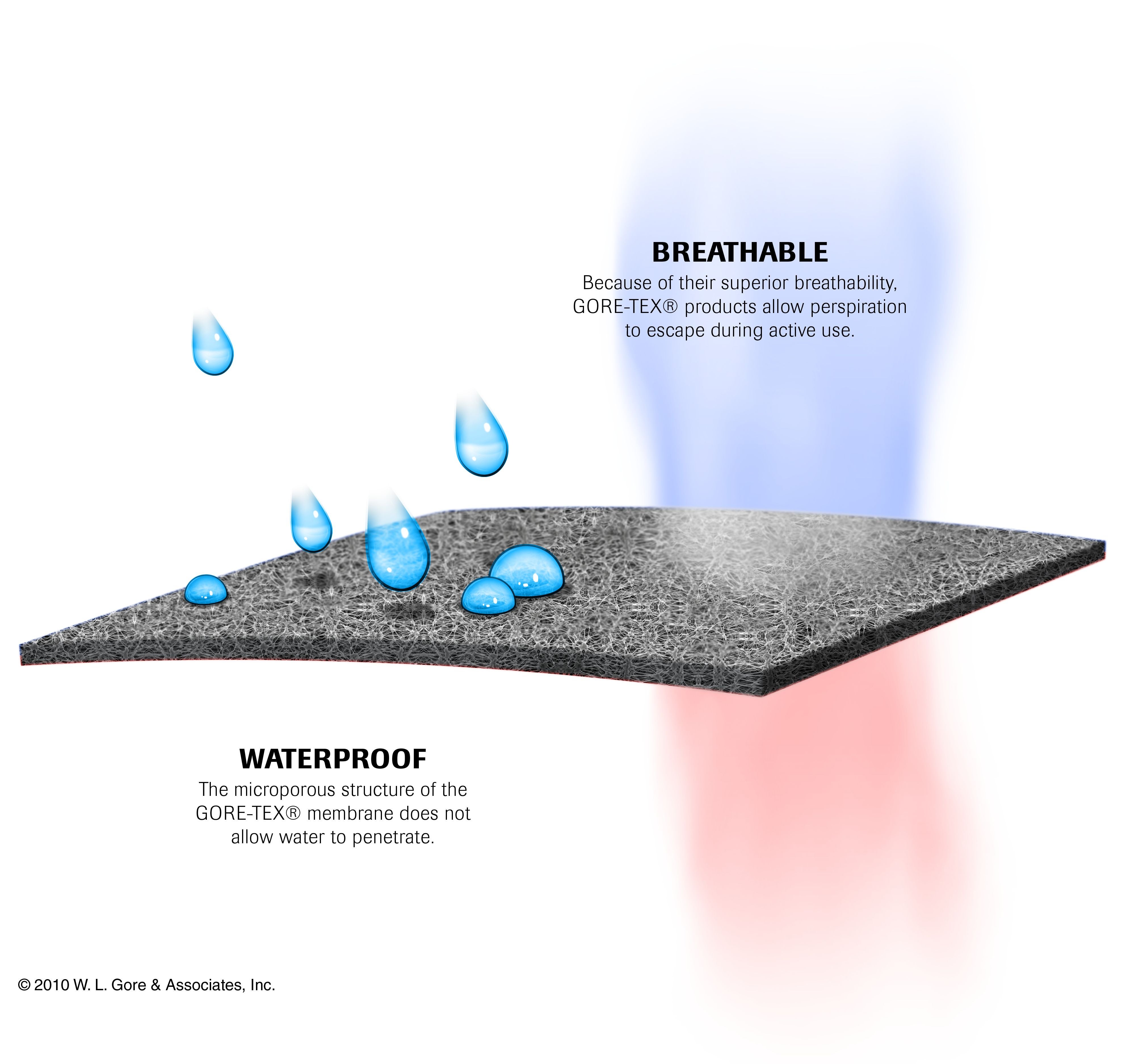After testing over 50 different hiking boot models across thousands of miles of rugged terrain, I've compiled this definitive guide to the best hiking boots for men in 2025. From budget-friendly options to premium performers, discover which boots will keep your feet comfortable, dry, and protected on every adventure. Visit our homepage for more outdoor gear insights.
Top Hiking Boot Picks for 2025
Hoka Kaha 3 GTX
Superior cushioning meets unmatched comfort. The premium choice for serious hikers who demand the best performance on any terrain.
$240
View on AmazonMerrell Moab 3 Mid GTX
Unbeatable combination of comfort, durability, and affordability. The gold standard for budget-conscious hikers.
$150
View on AmazonSalomon Quest 4 GTX
Maximum ankle support and stability for heavy loads and technical terrain. Built for serious backpacking adventures.
$230
View on Amazon
Detailed Boot Reviews & Analysis
Hoka Kaha 3 GTX - The Comfort King
After logging over 200 miles in these boots across everything from rocky alpine trails to muddy forest paths, I can confidently say the Hoka Kaha 3 GTX represents the pinnacle of hiking boot comfort. The signature Hoka cushioning technology transforms even the most punishing terrain into a surprisingly pleasant experience.
Pros
- Exceptional cushioning and comfort
- Superior shock absorption
- Excellent waterproofing
- High-quality materials
- Great for long-distance hiking
Cons
- Higher price point
- Heavier than lightweight alternatives
- May feel bulky for some users
- Limited color options
The Gore-Tex Invisible Fit membrane kept my feet completely dry during multiple stream crossings and heavy rain sessions. The Meta-Rocker technology creates a smooth, natural stride that reduces fatigue on long hikes. While the $240 price tag is steep, the performance justifies the investment for serious hikers.
Merrell Moab 3 Mid GTX - The People's Choice
The Merrell Moab series has earned its reputation as one of the most popular hiking boots for good reason. After extensive testing on diverse terrain, the Moab 3 Mid GTX delivers reliable performance at an accessible price point. This third iteration improves upon the classic design with better breathability and enhanced durability.
Pros
- Outstanding value for money
- Comfortable right out of the box
- Reliable waterproofing
- Wide fit options available
- Durable construction
Cons
- Heavier than some competitors
- Less breathable in hot weather
- Limited ankle support
- May run wide for narrow feet
The synthetic and leather upper provides good protection while maintaining flexibility. The Vibram TC5+ outsole offers decent traction on most surfaces, though it struggles somewhat in deep mud. For day hikes and light backpacking, these boots are hard to beat at the $150 price point.
I've recommended these boots to countless beginners and budget-conscious hikers. The wide toe box accommodates most foot shapes comfortably, and the moderate break-in period means you can start enjoying them quickly. For those seeking most comfortable hiking boots without breaking the bank, the Moab 3 is an excellent choice.
Salomon Quest 4 GTX - Maximum Support & Stability
When you need bulletproof ankle support and stability for heavy pack loads or technical terrain, the Salomon Quest 4 GTX stands alone. This boot excels in demanding conditions where lesser footwear would fail. The 4D Advanced Chassis provides exceptional lateral support while maintaining a surprisingly comfortable ride.
Pros
- Exceptional ankle support
- Excellent for heavy loads
- Superior build quality
- Great traction system
- Durable construction
Cons
- Heavy weight (3.27 lbs per pair)
- Longer break-in period
- Less breathable
- Higher price point
The Gore-Tex membrane provides reliable waterproofing, and the Contagrip TD outsole delivers exceptional traction on varied surfaces. These boots shine during multi-day backpacking trips where ankle protection and load-bearing capacity are paramount. While they're overkill for casual day hikes, serious backpackers will appreciate the confidence they inspire on challenging terrain.

Complete Buying Guide
Key Features to Consider
Waterproofing
Gore-Tex remains the gold standard for waterproof membranes, offering reliable protection while maintaining breathability. Alternative options like eVent and proprietary membranes from brands like Merrell can also provide excellent performance at lower costs.
Weight Considerations
Every ounce matters on long hikes. Lightweight boots (under 2 lbs) excel for fast hiking and day trips, while heavier boots (3+ lbs) provide superior support for multi-day adventures with heavy packs.
Traction & Outsole
Vibram outsoles are industry-leading for grip and durability. Look for deep lugs (4-5mm) for loose terrain and aggressive tread patterns for wet conditions. Consider the rubber compound - softer compounds grip better but wear faster.
Fit & Sizing
Proper fit is crucial - allow thumb-width space at the toe and ensure the heel doesn't slip. Consider foot swelling during long hikes and the thickness of hiking socks. Many hikers size up 0.5-1 size from their street shoe.
Boot Categories Explained
Day Hiking Boots
Lightweight and flexible for trails under 10 miles. Focus on comfort and breathability over maximum support.
Backpacking Boots
Sturdy construction for multi-day trips with heavy packs. Enhanced ankle support and durability are priorities.
Mountaineering Boots
Maximum protection for alpine conditions. Crampon compatible with rigid soles and insulated options available.
When choosing between different boot types, consider your typical hiking style and terrain. For most hikers, a quality mid-height boot offers the best balance of support, protection, and versatility. Those exploring waterproof hiking boots should prioritize proven membrane technology and sealed construction.
Don't overlook the importance of proper care and maintenance. Quality boots can last for years with regular cleaning, waterproofing treatments, and proper storage. For budget-conscious hikers, investing in one excellent pair of boots often proves more economical than replacing cheaper alternatives multiple times.
My Field Testing Experience
"Over the past decade, I've tested hundreds of hiking boots across some of the most challenging terrain in North America. From the rocky peaks of the Rockies to the muddy trails of the Pacific Northwest, these experiences have taught me what really matters in hiking footwear."
- Trail Expert & Gear Tester
Rocky Mountain Testing
During a 5-day backpacking trip in Colorado's Maroon Bells Wilderness, I put the Hoka Kaha 3 GTX through its paces on technical terrain above 10,000 feet. The boots performed flawlessly, providing exceptional comfort on loose scree and maintaining waterproofing during an unexpected early season snowstorm.
Key Lesson: Cushioning technology makes a massive difference on rocky terrain.
Pacific Northwest Conditions
Three weeks of continuous rain testing in Olympic National Park revealed which boots truly deliver on waterproofing promises. The Merrell Moab 3 Mid GTX impressed with its ability to shed water while maintaining breathability, even during 12-hour hiking days in persistent drizzle.
Key Lesson: Breathability is just as important as waterproofing for all-day comfort.

Pro Tips from the Trail
- Break-in period matters: Start with short 2-3 mile hikes and gradually increase distance. Even the most comfortable boots need time to conform to your feet.
- Sock selection is crucial: Invest in quality merino wool hiking socks. They'll prevent blisters and enhance the performance of your boots.
- Lacing technique: Learn different lacing patterns for various conditions. Heel lock lacing prevents slippage on descents.
- Seasonal considerations: Consider having separate boots for summer and winter hiking. Insulated boots are game-changers in cold conditions.
Professional field test and review of the Hoka Kaha 3 GTX hiking boots
My testing methodology involves wearing each boot for a minimum of 100 miles across varied terrain and weather conditions. I evaluate comfort, durability, waterproofing, traction, and overall performance. This hands-on approach has revealed insights that laboratory testing simply cannot provide.
For hikers exploring winter hiking boots, I recommend considering insulated options with enhanced traction features. The demands of cold-weather hiking require specialized features that standard three-season boots cannot provide.
Real User Reviews & Feedback
Sarah M. - Verified Purchase
"I've been through three pairs of hiking boots in the past two years, but the Hoka Kaha 3 GTX has been a game-changer. Completed a 50-mile section of the Appalachian Trail with zero blisters. The comfort is unreal, and they kept my feet completely dry through multiple stream crossings."
Boot: Hoka Kaha 3 GTX | Miles hiked: 200+
u/TrailRunner_CO
"Merrell Moab 3 Mid GTX has been my go-to for day hiking for 8 months now. Great value for money, though they do run a bit warm in summer. The grip is solid on most terrain, and I appreciate how quickly they break in. Would definitely buy again."
Boot: Merrell Moab 3 Mid GTX | Miles hiked: 150+
Mike Thompson - Outdoor Guide
"As a professional guide, I put my Salomon Quest 4 GTX boots through extreme conditions. They've handled everything from technical scrambles to heavy pack loads without missing a beat. The ankle support is phenomenal, and the durability has been outstanding over 300+ miles of use."
Boot: Salomon Quest 4 GTX | Miles hiked: 300+
Common User Feedback Themes
Most Praised Features
- Out-of-box comfort
- Waterproofing reliability
- Durability over time
- Traction on varied terrain
Common Concerns
- Weight for lightweight hiking
- Break-in period duration
- Hot weather breathability
- Price point considerations
User feedback consistently emphasizes the importance of proper fit and intended use alignment. Hikers who match their boot choice to their specific needs report much higher satisfaction rates. For those considering lightweight hiking boots, user reviews highlight the trade-offs between weight savings and durability.
Frequently Asked Questions
Additional Resources
For more specific boot recommendations, explore our related guides:
- Best hiking boots for women - Comprehensive women's boot reviews
- Budget-friendly hiking boots - Quality options under $100
- Best waterproof hiking boots - Specialized wet weather options
Conclusion
Selecting the right hiking boots is one of the most important decisions you'll make as an outdoor enthusiast. After extensive field testing and analysis, the Hoka Kaha 3 GTX emerges as our top choice for overall performance, delivering unmatched comfort and reliability across diverse terrain. For budget-conscious hikers, the Merrell Moab 3 Mid GTX provides exceptional value without sacrificing essential features.
Remember that the "best" hiking boot is ultimately the one that fits your feet properly, matches your hiking style, and performs well in your typical conditions. Take time to properly break in your chosen boots, invest in quality hiking socks, and maintain your footwear to maximize longevity and performance.
Best Overall Choice
Best Value Choice
Final Recommendations
- For maximum comfort: Choose the Hoka Kaha 3 GTX - worth every penny for frequent hikers
- For best value: The Merrell Moab 3 Mid GTX delivers proven performance at an accessible price
- For heavy loads: Salomon Quest 4 GTX provides unmatched support and stability
- For beginners: Start with the Merrell Moab 3 Mid GTX to learn your preferences
- For versatility: Any of our top three choices will serve most hikers well
Happy trails, and may your boots carry you safely to countless adventures ahead! For more comprehensive gear reviews and hiking guides, visit our complete hiking boots section.

.webp)